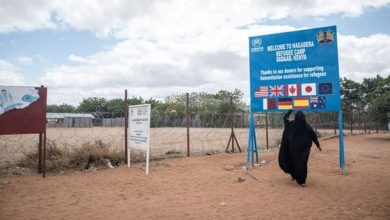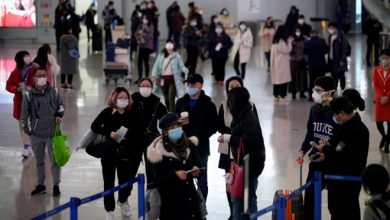St. Paul Public Schools is one of the most diverse districts in the state. Increasingly, parents prefer segregation.
The St. Paul school board voted last month to close six schools, citing one major factor: declining enrollment.
“Closing schools is the last thing that I, members of my leadership team, or board members want to do,” Superintendent Joe Gothard wrote in an email to district families after the vote. “But when our current enrollment reality is negatively impacting our ability to provide every student with the education and services they need and deserve, something has to change.”
Last year, more than 20,000 St. Paul students opted to attend a charter school, a private school, or a different school district. Just 63 percent of school-aged St. Paul children attended the city’s public schools in 2020–2021, and the percentage has been falling for years.
So where are these 20,000 students going? We requested data from the Minnesota Department of Education to find out. As it turns out, the answer depends largely on a student’s race.
Most students leaving the district are going to charter schools. And many students—white, Black, and Asian—are choosing segregated schools that serve primarily students of their own race.
St. Paul Public Schools, which enrolled nearly 35,000 students last year, is one of the most diverse districts in the state. While its demographics vary from one school to another, the overall profile of the school district looks like this:
These demographics are not entirely representative of all St. Paul children. Census data indicate that less than half the city’s white children ages 5–17 attend St. Paul Public Schools, opting out of the district more than any other demographic group.
Over 60 percent of all students leaving the district last year opted for charter schools, and about 20 percent chose private or parochial schools. Despite the disruptions of the pandemic, just a handful opted for homeschooling. The remainder enrolled in neighboring school districts through Minnesota’s open enrollment option.
The overall racial makeup of the students leaving the district for charter schools and other districts fairly closely resembles the St. Paul Public Schools demographic profile. That suggests that many of the missing white children attend private schools, for which the state does not capture student demographic data.
The Minnesota Department of Education tracks the school choices and racial demographics of students who leave their home district for a different public or charter school option. It does not track this data for private school or home school students. Using this data, we can see which charter schools and districts draw the most St. Paul students.
The charter schools Hmong College Prep Academy and Community School of Excellence draw the most students from St. Paul, followed by North St. Paul–Maplewood–Oakdale and Roseville Public Schools. Those are the only public school districts on the top ten list; the rest are charter schools.
When St. Paul students leave the district, the schools they choose vary dramatically by race. This pattern is especially clear at charter schools, which are exempt from Minnesota’s desegregation law.
This law, which went into effect in 1999, requires school districts to create and enact school integration plans. It requires “racially isolated” districts—that is, districts where enrollment of students of color is more than 20 percentage points higher than any adjoining district—to create integration plans with neighboring districts. Districts must also integrate racially identifiable schools within their district by promoting programs at those schools to attract a wider range of students.
When Asian students, who constitute the largest demographic group in St. Paul Public Schools, leave the district, they overwhelmingly choose charter schools that primarily serve Asian students.
More than half of all Asian students leaving the district choose either Hmong College Prep Academy or Community School of Excellence.
Put another way, most Asian students leaving St. Paul Public Schools attend charter schools whose student bodies are more than 96 percent Asian. Most of the students at these schools are Hmong.
The three most popular destinations for Black students leaving St. Paul Public Schools are all charter schools where most students speak Somali.
At each of these charter schools, more than 95 percent of the students are Black, and more than 75 percent are Somali.
The demographics in the schools of choice are less striking for Latino students. While the top choice is an overwhelmingly Latino charter school, the next three choices are more diverse. Still, many Latino students, who make up about 14 percent of the St. Paul Public Schools population, opted for charter schools with more Latino student representation.
White students, too, showed a strong preference for schools with more students who look like them. In St. Paul Public Schools, one in every five students is white.
Their top two choices are charter schools where white students constitute a majority. Their next two choices are public school districts that are significantly whiter than St. Paul Public Schools.
White children in St. Paul attend public schools in a lower proportion than other demographic groups. Many choose private and parochial schools. The state does not track home districts or demographic data for private school students.
The most popular charter schools for St. Paul’s white students are Nova Classical Academy and Great River School. Nova Classical Academy focuses on a “classical education,” while Great River School provides a Montessori education with a social justice focus.
Are separate schools inherently unequal?
The United States Supreme Court outlawed school segregation in its landmark 1954 decision, Brown v. Board of Education, which declared that separate schools for Black and white students were inherently unequal.
But in Minnesota, school integration requirements do not apply to charter schools. And many St. Paul students—Asian, Black, Latino, and white—are choosing segregated schools and leaving the diverse school district. As a result, district enrollment is declining, and St. Paul district leaders are making difficult choices about closing public schools.
Since 2015, a lawsuit called Cruz–Guzman v. State of Minnesota has been making its way through the state courts. The suit, led by a handful of Minnesota parents of color and supported by the American Civil Liberties Union, accuses the state of providing substandard education to children of color. The lawsuit challenges school segregation in Minnesota, including both de facto segregation in public schools and legal segregation in charter schools.
In a proposed settlement last year, the parties agreed to a deal that would include a busing program throughout the Twin Cities metro area, more magnet schools, and an end to charter schools’ exemption from mandatory desegregation.
But when the legislature failed to approve the deal, the case went back to court. A district judge last month denied summary judgment and referred the case to the Minnesota Court of Appeals.





